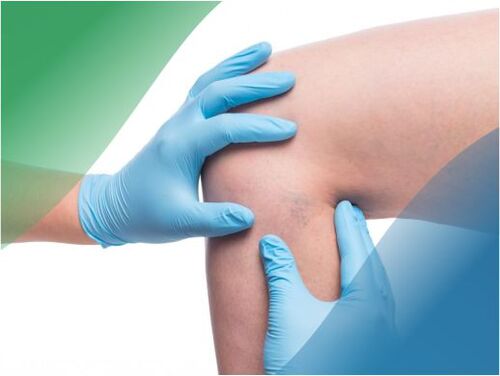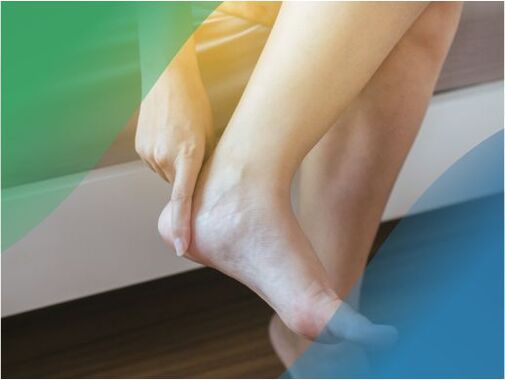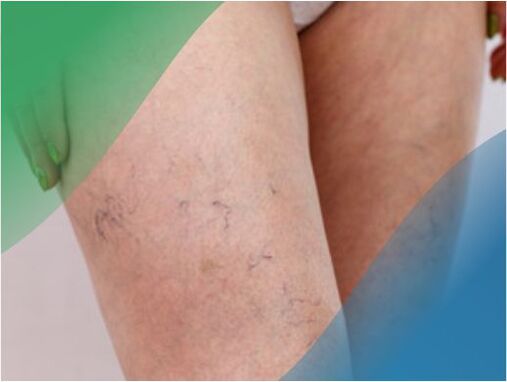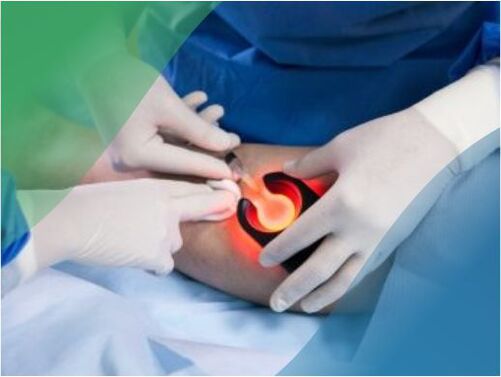
What do we think when we hear the wordvaricose veins"? First of all, ugly legs are purple-blue in color, covered with many tubercles and a vascular network visible through the skin. Many of us think of varicose veins as an exclusively cosmetic pathology that does not require special treatment. that you can live with varicose veins for many years, that this disease does not progress and does not lead to serious consequences, remaining only an external defect. Unfortunately, this opinion is not only erroneous, but also dangerous.
To understand why varicose veins are dangerous, there are ways to prevent them, why the disease should be treated if it has already appeared, and most importantly, how to do it, we turn to a phlebologist for advice. We talk about the mechanisms of the onset of the disease, ways to prevent it, lifestyle characteristics in the presence of this diagnosis and modern methods of correction.
what is varicose veins
,%20varicose%20vein%20(right).jpg)
Varicose veins are a disease known to mankind since ancient Egypt. Archaeological excavations confirm the presence of pathology among the contemporaries of the pharaohs and the builders of the famous pyramids. Hippocrates and Avicenna, people recognized as the best physicians of antiquity, were looking for ways to successfully treat varicose veins. What happens to varicose veins? Why does the disease occur?
Normally, in the human body, blood moves through the veins from the bottom up - from the tissues to the heart and lungs, and the contractions of our muscles help it with this. But due to the force of gravity, which affects every aspect of human existence, the liquid logically tends to descend. The special valves that are in our veins don't allow it to do that. They open in the direction of blood flow and close to keep it out. Thus, under the "sensitive guidance" of the valves that exist in the veins, the blood is directed to where it is needed.
But often, for some reason, the operation of the valves is interrupted, they do not close completely, and blood still flows through the veins. Vessels cannot contain all the blood, they extend and protrude above the skin with tubercles. Most often, the external thin veins in the legs are affected in this way, and the disease "varicose veins" occurs.
Causes of disease
There are a few causes of varicose veins, and all of them are well known to medicine.

- hereditary predisposition.Heredity is one of the most common causes of the disease. Scientists have identified the so-called "varicose vein gene", responsible for their appearance. Therefore, if your relatives had any problems with the veins, it is necessary to be examined by a phlebologist as soon as possible. After all, the disease can manifest itself at any age, even very young. Varicose veins are insidious as the visible symptoms appear much later than the disease itself.
- Weakness of vascular walls and valve apparatus.Many chronic diseases (pyelonephritis, rheumatism, hepatitis, liver cirrhosis, etc. ), hormonal changes and metabolic disorders, unhealthy lifestyles, physical inactivity, lower extremity injuries, women taking hormonal contraceptives lead to this condition.
- Professions associated with a long stay in a static position(standing or sitting). Programmers, drivers, hairdressers, salespeople, woodworkers, carpenters, and many others are at risk of having varicose veins.
- Pregnancy. Even if there are no hereditary causes of the disease in the anamnesis of the pregnant woman, during pregnancy the risk of "getting" varicose veins increases significantly. Why does it happen? The synthesized "pregnancy hormones" affect smooth muscle muscles, relaxing the tone of the venous walls. The volume of circulating blood increases, thus increasing the pressure on the vascular walls and valve apparatus. A woman's rapid weight gain during pregnancy puts extraordinarily strong pressure on her legs and, consequently, on her veins.
- Overweight.With excess weight, deformation of the vascular wall occurs due to a large load, vascular pressure and pressure on the surrounding tissues increase. With excess weight, blood pressure rises, movement of blood to the heart becomes difficult, and venous congestion occurs.
- Gender and age.According to statistics, more than 70% of varicose veins occur in women of childbearing age. But cases of the disease are not uncommon in men, children and adolescents. Therefore, if any disturbing symptoms appear, consultation with a phlebologist is necessary, regardless of the sex and age of the patient.
disease symptoms
As we said above, the disease in the early stages is asymptomatic or disguised as ordinary fatigue: after a day of work, the legs buzz and swell, but in the morning or after a long rest, everything goes away. There may also be convulsions at night, itching and burning in the lower extremities, a feeling of heaviness in them. Such symptoms, as a rule, do not cause concern and are dismissed as banal overwork. The initial stage of varicose veins does not reduce a person's physical activity, it does not force him to change his lifestyle.
In the future, with the development of the disease, the symptoms become more pronounced: a vascular network and tubercles appear on the lower extremities, the swelling does not go away even after a long rest, severe pain occurs after a short walk, forcing a person to change the usual rhythm of life, reduce physical activity to a minimum, which leads to an even more serious stagnation of the blood and, consequently, to the worsening of the disease.
Why are varicose veins dangerous?

In addition to the obvious negative consequences in the form of a cosmetic defect and the inability to continue the usual way of life, varicose veins are dangerous for their complications.
- Venous bleeding.It occurs due to the fact that the normal connective tissue of the vascular walls gradually changes its properties, becoming fragile and inelastic. Even the slightest physical exertion (eg coughing or sneezing) can lead to vessel rupture and serious consequences in the form of bleeding.
- Eczema and dermatitis.They occur due to impaired blood supply, prolonged lack of oxygen. On the skin of the limb affected by varicose veins, small blisters, scales, crusts appear, accompanied by intense itching.
- Thrombophlebitis.This is a serious chronic disease characterized by inflammation of the veins of the lower extremities, accompanied by the appearance of blood clots in their lumen. In most cases, thrombophlebitis appears as a result of varicose veins. The disease is accompanied by an increase in body temperature to 38-39°C, sharp arching pain in the affected area, persistent swelling and complete limitation of motor activity.
- Necrosis and trophic ulcers.One of the most serious complications of varicose veins. Such a pathological process occurs against the background of thrombophlebitis, when, due to an inflamed varicose vessel, metabolism is disturbed, and the tissues experience a prolonged lack of oxygen. As a result, areas of dead cells appear on the surface of the skin, which eventually develop into a large ulcer. Trophic ulcers are difficult to treat, the average treatment period for such ulcers and necrosis is 3-4 months.
- Thrombosis.The most dangerous complication of varicose veins. This pathological condition is characterized by the formation of a blood clot in the deep veins, which interrupts blood flow. Deep vein thrombosis is dangerous, first of all, because in the process of the most mundane household activities, a blood clot can break, which can lead to blockage of the pulmonary artery or other vital vessel and cause death. The presence of deep vein thrombosis means a lifelong restriction of the patient's motor activity.
It should be noted that all the serious consequences of varicose veins occur against the background of a lack of treatment or as a result of incorrect treatment of the disease.
How to treat varicose veins?

The disease is difficult to treat and in 80% of cases it returns even with careful and adequate therapy, as the deformed vessels cannot, under any circumstances, assume their previous form. But you need to treat varicose veins! The advanced stages of the disease can lead to serious consequences and even death. The combination of modern methods of treatment and prevention of varicose veins can prevent the development of the disease and the appearance of serious complications. Modern medicine offers many ways to deal with illness.
- Compression therapy.It is carried out with the help of special compression underwear. The basis of therapy is the creation of pressure in the lower extremities. As a result of this treatment, venous circulation improves, valve functions are restored, excess fluid is removed, venous pressure in the legs decreases several times, joints become more mobile, and the rate of blood flow increases. Compression therapy can be used as an independent method of treatment and as an adjunct to other methods of treating varicose veins. Compression underwear is only prescribed by a doctor!
- Medical therapy.It is prescribed by a doctor to relieve the symptoms of the disease, reduce blood viscosity, improve the elasticity and regeneration of blood vessels, increase metabolism and prevent blood clots.
- Sclerotherapy.This is an innovative and minimally invasive technique, the indisputable advantage of which is not only a very good cosmetic effect, but also a remarkable reduction in the symptoms of the disease. To date, sclerotherapy is one of the most effective ways to fight varicose veins and related functional disorders. The procedure consists of introducing special solutions with a syringe with a thin needle into the damaged vein. The injected drug sticks to the vessel, thus interrupting blood circulation in it. This is the main purpose of manipulation - to remove the problem area from the general circulation.
- Surgical intervention.It is indicated in the stages when the disease significantly impairs the quality of life and threatens the development of dangerous complications. Surgical intervention in most cases includes several different methods at the same time, the main objective of which is to reduce the symptoms of the disease, improve the patient's quality of life and prevent the development of complications.
There are many effective ways of dealing with varicose veins in modern medicine. The main thing doctors ask is: don't self-medicate! When the first unpleasant symptoms appear, such as heaviness and pain in the legs, night cramps, formation of a vascular network and others, consult a phlebologist (vascular surgeon). The doctor will carry out an examination, if necessary, prescribe further examination and treatment.












































